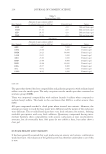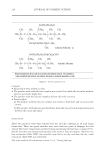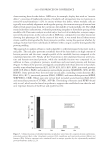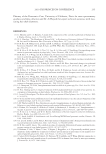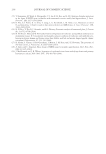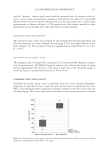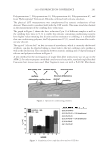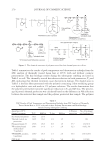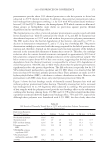2010 TRI/PRINCETON CONFERENCE 205 away from the scalp (Proximal reading). The second measurement was taken 7 cm away from the fi rst measurement to get the distal reading. The protocol for determining HBI is represented in Figure 1. The change in diameter determines the HBI values. All the measurements were performed at 21°C and 60% relative humidity. DETERMINATION OF BREAK STRESS Break stress of hair was measured using Instron tensile tester (URM/LRX Plus). Hair fi - bers (3 cm) were mounted on Instron crimps and were stretched to break. The hair diam- eter for determining the was measured using a folliscope. A load of 100N was applied to the fi bers and the operating speed was 10 mm/min. The Break Stress of the hair was de- termined from the stress-strain curve. The measurements were performed at 21°C and 60% relative humidity. RESULTS AND DISCUSSION HAIR BREAKAGE INDEX The HBI values were calculated both at the baseline and after 16 weeks for both the groups. The mean HBI values at the baseline were 9.25 and 12.23 for NU and CNO groups, respectively (Table 1). The HBI value increased by 9.5% in the NU group which is an indicator of hair damage. However, the HBI value decreased by 41.8% among CNO user group. After daily treatment with CNO for 16 weeks, the HBI value was signifi - cantly decreased in the CNO user group as compared to NU (P 0.05). The decrease in HBI value is an indicator of the increase in hair diameter or less breakage in CNO user group. The lowered hair breakage is assumed to be an outcome of the conditioning ben- efi ts of the oil and which could be attributed to the reduction of the combing force during Figure 1. Methodology for assessment of HBI using the hair check instrument.
JOURNAL OF COSMETIC SCIENCE 206 Table II Break Stress of Hair before and after the Application of the Product User group Break stress of hair (MPa) Mean ± SEM* Baseline After 16 weeks CNO 198.70 ± 7.4a 201.4 ± 5.9a NU 20.20 ± 5.8a 182.00 ± 5.3b Values indicated by different letters in superscript in the same column and same row are signifi cantly different ( p 0.05). *SEM: Standard error of the mean. daily grooming practices. CNO is mostly a triglyceride of lauric acid and is hydrophobic in nature. Application of CNO as a pre-wash conditioner coats the hair surface and pre- vents the penetration of water into hair fi ber. A small part of it is absorbed into the hair during washing when the fi ber is swollen. Introduction of the hydrophobic component reduces the swelling of cuticle and hence reduction in protein loss. Therefore, CNO users had less hair damage as compared to the non-users. BREAK STRESS Similarly, the break stress was decreased by 9.55% in NU group and it was increased by 1.35% in CNO group. The break stress of hair was signifi cantly increased in the CNO user group versus NU after 16 weeks of treatment (P 0.05) (Table 2). Penetration of oil into the hair cuticle prevents water from entering into the fi ber. CNO also helps in the plasticization of hair fi ber thus leading to increased break stress. In the NU group the break stress is decreased suggesting its damage due to daily grooming practices. The results of the study indicates that due to daily grooming practices the hair is under- going some degree of damage which was refl ected from the values of HBI and tensile strength. Application of CNO prevents the damage and thus could be used regularly in order to maintain healthy and beautiful hair. Table I Hair Breakage Index before and after the Application of the Product User group Hair breakage index (%) Mean ± SEM* Baseline After 16 weeks CNO 12.23 ± 1.13a 7.12 ± 1.26b NU 9.25 ± 0.92a 10.13 ± 1.63a Values indicated by different letters in superscript in the same column and same row are signifi cantly different ( p 0.05). *SEM: Standard error of the mean.
Purchased for the exclusive use of nofirst nolast (unknown) From: SCC Media Library & Resource Center (library.scconline.org)



































































































































